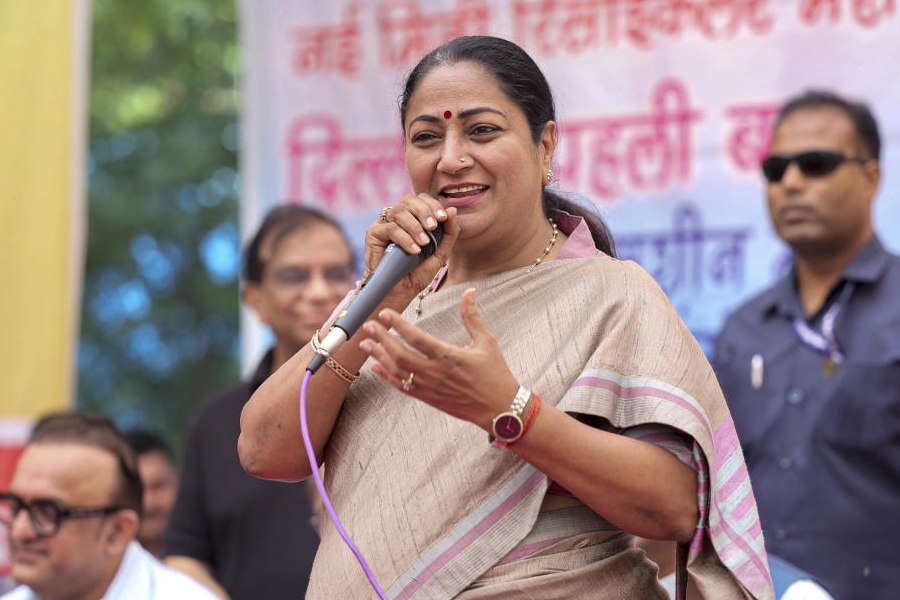As we move into cooler weather, our wine drinking will undoubtedly lead us to richer, luscious, juicy wines to warm our insides. Red wine from Australia serves this purpose perfectly since it produces full-bodied, fruity styles of wines that are a perfect accompaniment to hearty winter meals like stews or slow-roasted meats, and indeed, many Indian dishes. One sip of these wines invites a second and before you realise it, you’re nice and toasty.
Many of Australia’s major wine producing regions are in areas where the summers are cool to warm but also dry which allows the grapes to ripen slowly and develop rich fruit flavours. The grapes are also usually picked early enough so that the resulting wines retain some acidity which helps the wine in ageing, but also means the wine tastes fresher and provides a good balance to food.
 |
The appeal of Australian wines lies in their innovative twists on traditional, Old World wine styles. A Syrah from its traditional home, the Rhône Valley in southern France may be an austere, savoury wine with more herbal, spicy flavours and less upfront fruit on the nose and palate. It seems the modern wine drinker, particularly in ‘new’ wine drinking countries like India, gravitate towards a fruitier, sometimes less complex style of wine. Perhaps that’s because these wines can be perceptibly sweeter and this makes them more appealing.
When talking about Australia’s warming red wines, one automatically thinks of South Australia, and in particular, the Barossa Valley and McLaren Vale. Of course, the cigar-shaped region of Coonawarra in the east of the state, with its distinctive ‘terra rossa’ red soil produces classy Cabernet Sauvignon and Shiraz have a unique earthy-mintyness. But ‘classic’ Australian full-bodied red wine is best produced out of the Barossa and McLaren Vale.
 |
The Barossa Valley, north of Adelaide, now has sixth-generation winemakers and some vines 150 years old. It has a mix of large multi-national-owned wineries and family ones. Of these, the likes of Torbreck Vintners, Penfolds and Yalumba represent some of the best — all three are available in India.
One standout is Peter Lehmann, also known as the Baron of the Barossa, and Lehmann’s wines, made since 1979 by Andrew Wigan, are some of the most awarded Australian wines. The top wines produced are The Mentor (a Bordeaux blend) and the Stonewell Shiraz (both available in India) and the Reserve Riesling, sold when five years old and also on sale here.
Yalumba and Penfolds wines start from around Rs 1,800 and go upwards. The Peter Lehmann range starts at the very affordable sub-Rs 1,000 for the Weighbridge range up to about Rs 6,000 for the Stonewell. Generally speaking, Torbreck produces wines priced at slightly higher — upwards of Rs 2,500. Remember to factor in local taxes.
 |
Shiraz is surely the best wine grown in the Barossa Valley. At best, the wines are lush, velvety and mouth-filling. The use of American oak to mature them gives them a wonderful vanilla aroma which is nicely mingled with characteristic black cherry and black currant fruit aromas. Tannins tend to be ripe and firm and this, when considered alongside the levels of alcohol in the wine, have made them extremely popular with critics in the United States.
The other Rhône varieties of Grenache and Mourvèdre (sometimes called Mataro in Australia) are perfect blending companions to Shiraz as they offer a fruity balance that can boost the wine’s natural fruit ‘sweetness’. Look out for the traditional Barossa Valley GSM (Grenache, Shiraz, Mourvèdre) with its cherry/raspberry aromas and intriguing hints of brown spice and pepper on the palate. These styles are ideal when paired to mild, spicy Peshawari Raan Masaledar, a leg of lamb roasted with a ginger, coriander, chilli and nut paste and raisins. The smoky, roast flavour of the meat, when married with the sweetness of the raisins will go magnificently with the Shiraz or Grenache blends.
 |
The McLaren Vale south of Adelaide produces its own expression of Shiraz and Grenache (the two mainstays of the region) that are rich, dense and full of “oompf!”
The wines here are less ‘spicy’ than those of the Barossa but tend to have a distinctive bitter dark chocolate note to them which makes them ideal matches for slow-cooked lamb and other red meat dishes with a hint of spice.
Cabernet Sauvignon, the red grape of Bordeaux is also very impressive here. The style is opulent, ripe and full-bodied , perfect wine for enjoying with something like a Kerala beef fry, a gravy-less dish that is quite fragrant with notes of fennel, coriander seeds, cinnamon and coconut. The chewiness of the dish will complement the firm tannins of this wine perfectly. Iconic producers include d’Arenberg and Clarendon Hills, both of whose wines are available here.
These producers have captured a noticeable international audience with their styles of typical McLaren Vale wines. D’arenberg has wines at the very affordable sub-Rs 2,000 price. Clarendon Hills is a low outupt, high value producer and have delicious but slightly more pricey wines — upwards of Rs 3,000.
Australian wine makers still see themselves at the cutting edge of the New World of wine, but their focus is shifting to producing higher quality, higher value wine. A popular mantra touted by Wine Australia, the body responsible for promoting Australian wine is, “Why follow tradition when you can create your own?” We can only say “Cheers” to that!











